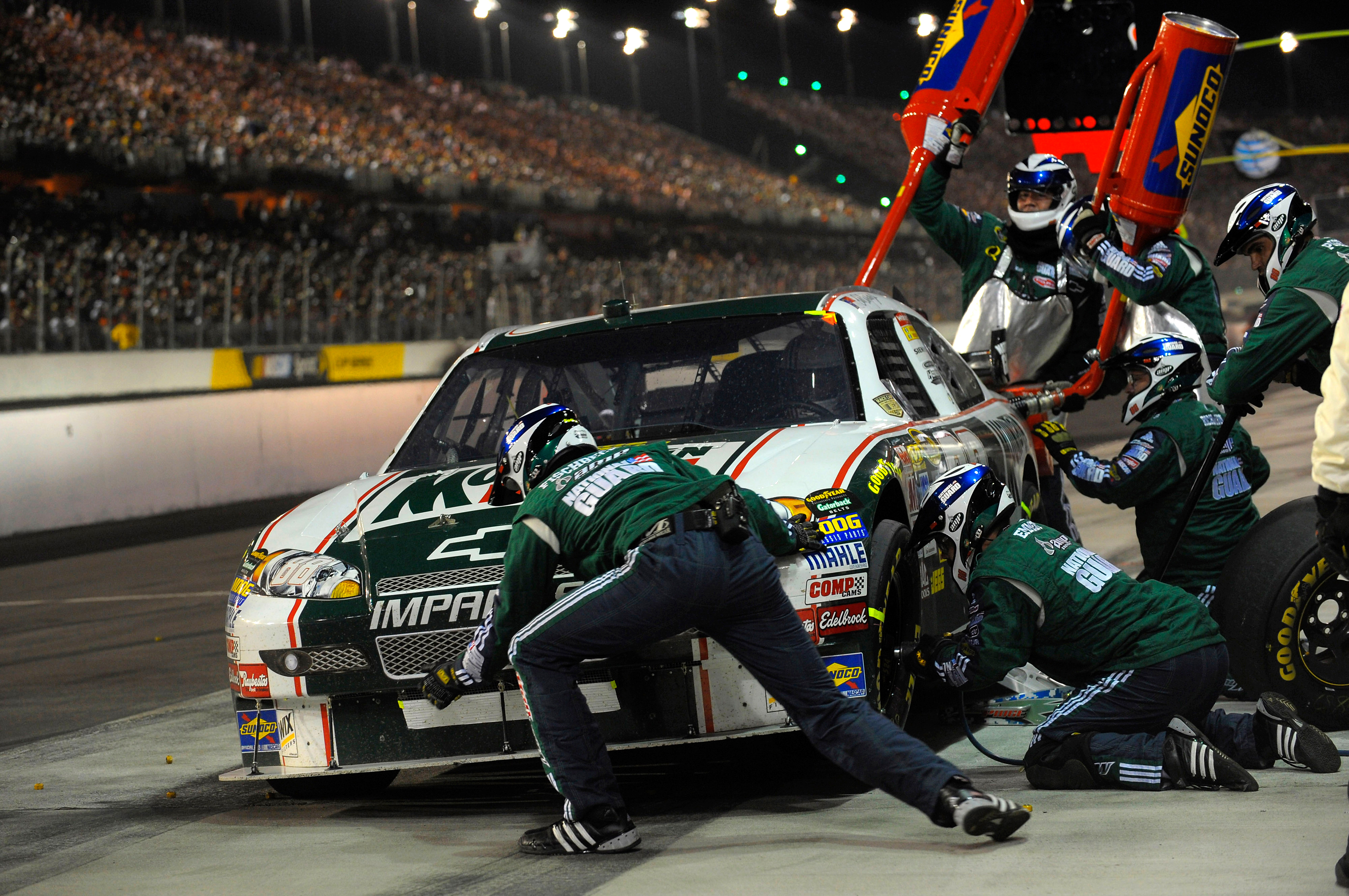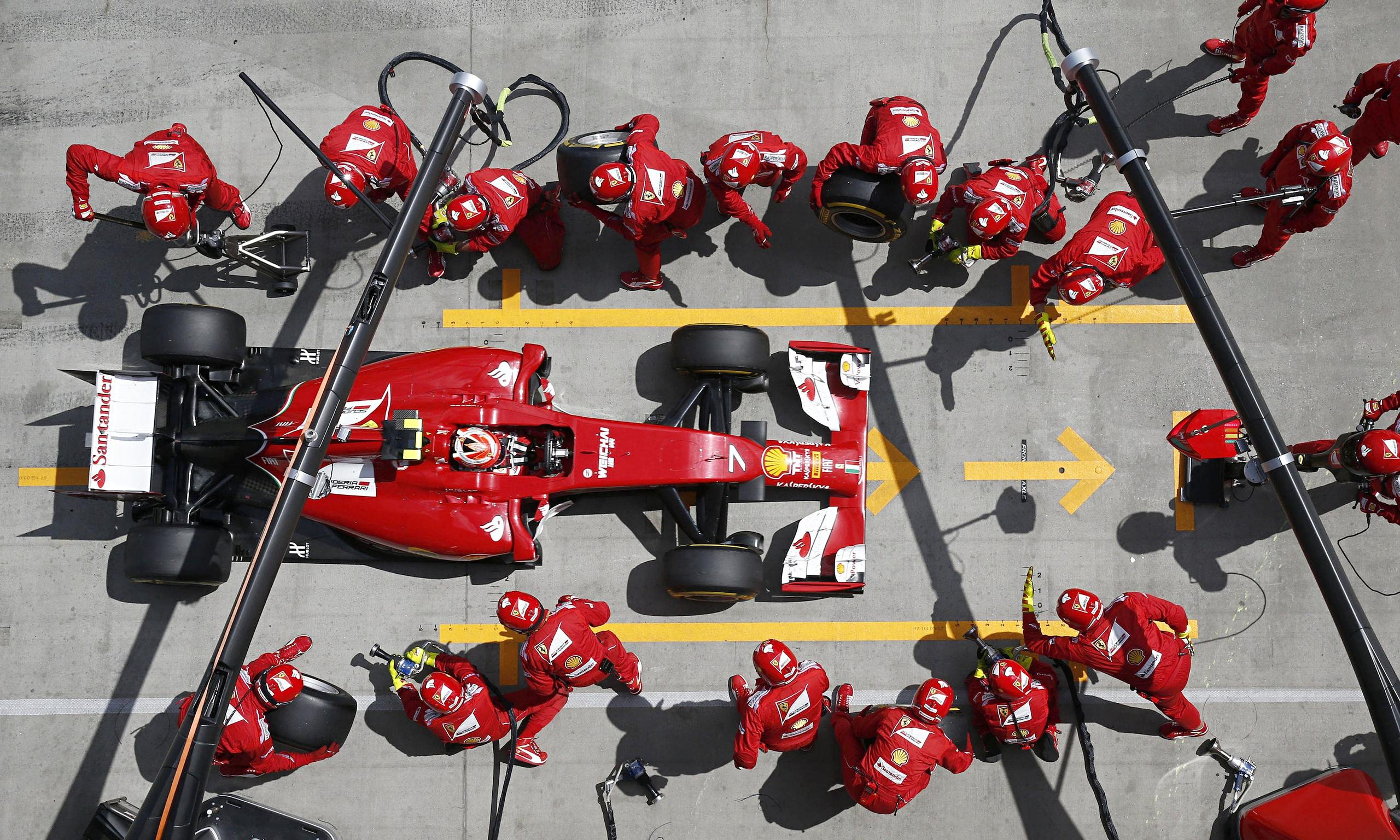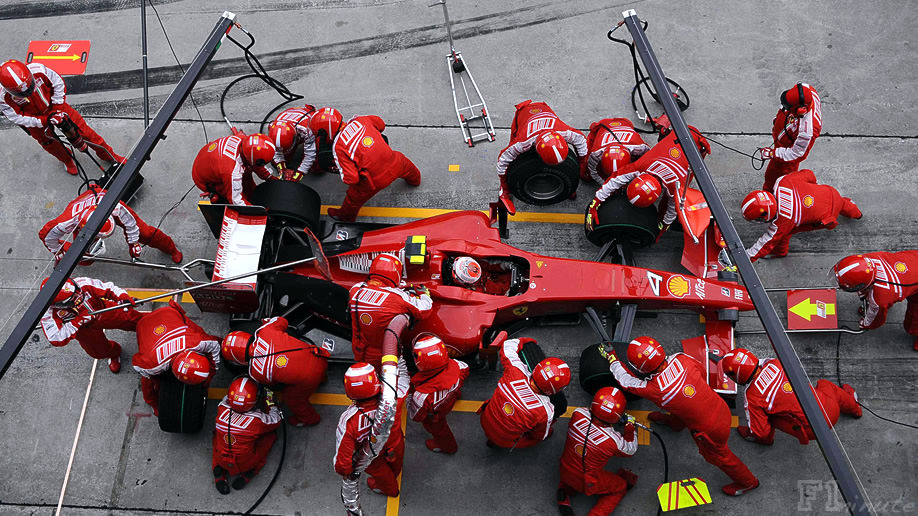Pit stop
As a pit stop is called in motorsports, the short-term stopping of a vehicle in the pits to refuel, to mount new tires, make minor repairs and / or mechanical adjustments or replace the driver. Several activities are allowed. What exactly prescribes the rules and regulations of the respective motor sport. The boxes are usually part of the pit lane, a section of line which is parallel to the start / finish straight runs and is connected at each end of the racetrack. Further facilities on the edge of the pit lane garages (usually one or two per team). In these garages, the cars are prepared before the race. Then keep them in the mechanics of the respective teams until they are needed again. The driver remains (except for a change of driver ) in the vehicle.
The racing sections, which are interrupted by the pit stops, called stints.
Pit stops as a tactical means
Pit stops can be race- critical ( for example, the formula 1). If your own pit stop completed faster than the competitors, so you can overtake him indirectly by circumstances. Therefore, the mechanic exercise regularly, to do the work as quickly as possible.
Due to the tank ban in Formula 1 since the 2010 season, the optimum pit stop should shorten ( with tire changes ) to 1.8 seconds.
The current world record, and thus date the fastest pit stop, has been achieved by team-mates Fernando Alonso in his Ferrari in Suzuka (Japan Grand Prix 2013). This made a 1.85sek stop and thus obtained a new record.
In addition, this a large number of employees are required, as are prescribed in other racing series to reduce costs and eliminate the pit stops as tactical means, for example, the number of pit crew or a minimum stay of vehicles in the pit lane.
Since the amount of gasoline and the condition of the tires significantly affect the race pace, pit stops cost but also time, it is important and race decisively, the right number of stops, the fuel load and the tires used (there are harder and softer, the former last longer, but the latter a little more grip offer ) before the race to determine. Therefore, especially the teams were in higher racing classes own strategists, which should work out the best possible race strategy. One of the best in his field, the former Ferrari strategist Ross Brawn. Brawn had helped to victory at the French Grand Prix 2004 by a redenominated only during the race four- stop strategy, the Ferrari driver Michael Schumacher. Previously, no one has ever won with four pit stops a Formula 1 race.
Pit stops as punishment
A pit stop, however, can also be performing a stop-and -go penalty. Depending on the race series, the race organizers impose penalties for unsportsmanlike conduct. In the stop-and -go penalty, the person concerned must have a certain time in the box stay, usually 10 seconds. During this time no repairs, tire changes, etc. must be carried out on the car. This punishment is not to be confused with the drive-through penalty in a particular driver has to drive through the pit lane once.
Dangers of pit stops
The pit stop is one of the riskiest activities during a race. As can also be at -the-art tanks always leak fuel and drip onto the hot exhaust, the risk of fire is always present. For this reason, it is for the mechanics, the driver and possibly also (for example, reporter or other team members, which is determined by the respective rules of a racing series ) everyone else in the pit lane in attendance mandatory to wear fireproof clothing. An example of a fire accident is the fire when refueling the Dutch Formula 1 driver Jos Verstappen in the Benetton - Ford at the Grand Prix of Germany at Hockenheim in season 1994. Because the tank tube was placed tilted, fuel could leak and ignite. Due to the refractory clothes but no one was seriously injured. Verstappen only suffered some minor burns. At the beginning of that season, the refueling was allowed in F1 again and again is forbidden since 2010.










